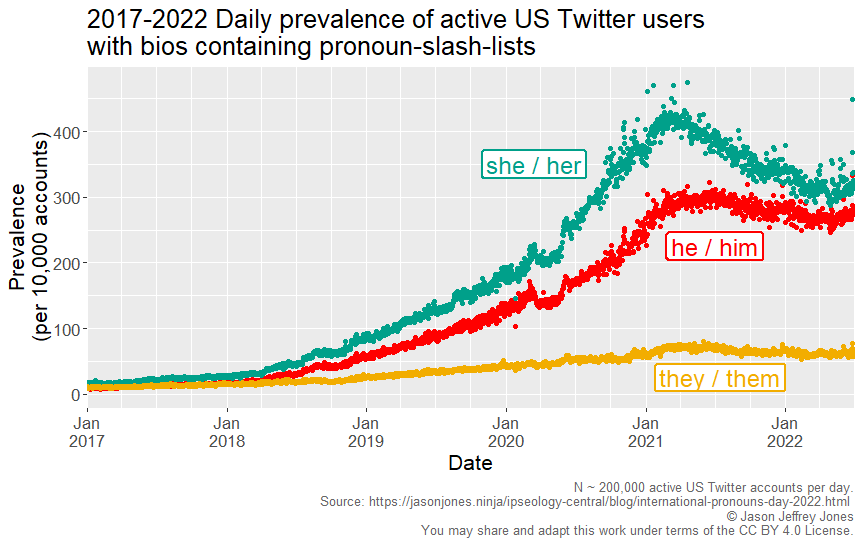1 Introduction
1.1 What is ipseology?
Ipseology is a word I made up. It refers to the study of ipseity. My definition of ipseity is: selfhood, individuality and the elements of identity.
I want to study ipseity at scale. At scale means with millions of observations covering substantial temporal periods and geographical areas. Think 20 million American users of Twitter over six years to start. Then ask, why not hundreds of millions across dozens of nations over more than a decade?
Let’s define ipseology as the study of human identity using large datasets and computational social science methods.
1.2 How does one do ipseology research?
Be patient; that’s what this whole book will tell you!
But for a first peek at the potential, let’s look at a fast-growing trend in Twitter profile biographies. Ipseology is ideal for studying temporal trends (i.e. changes in the language individuals use to describe themselves). Look at Figure 1.1.

I formally define prevalence in Chapter 3. In 2017, very few users included pronoun lists such as she/her, he/him and they/them in their profile biographies. Over the next few years, the numbers increased rapidly:
- From January 1, 2017 to June 30, 2022, the prevalence of
she/herincreased nearly 20x from 16 to 313. - The prevalence of
he/himincreased nearly 28x from 10 to 276. - The prevalence of
they/themincreased 5x from 11 to 58.
The ability to perform analysis like this is exciting for many reasons.
First, these estimates are more precise than is typical in social science analysis. Typical social science estimates are made based on small samples - from N=1 at worst to N=1,000 for a well-funded study. Each estimate in the above is drawn from about 200,000 observations.
Second, these estimates have finer resolution than is typical in social science analysis. In typical social science methods, the researcher measures exactly once, maybe twice if funding allows. With the ipseological approach, one instead estimates each and every day based on thousands of new observations.
Precision and resolution are just two advantages of the ipseological approach. For now, suffice to say, we have a new way to examine human identities. We can use it consistently across time and geography. Let’s get started! Chapter 2